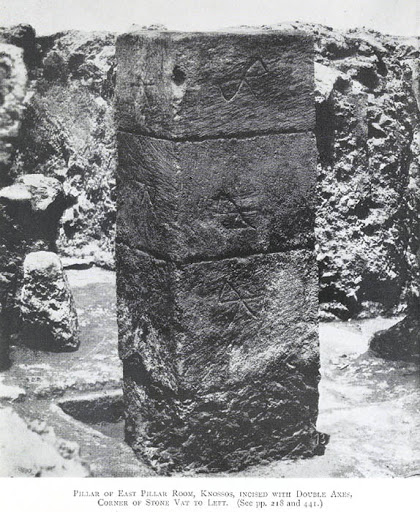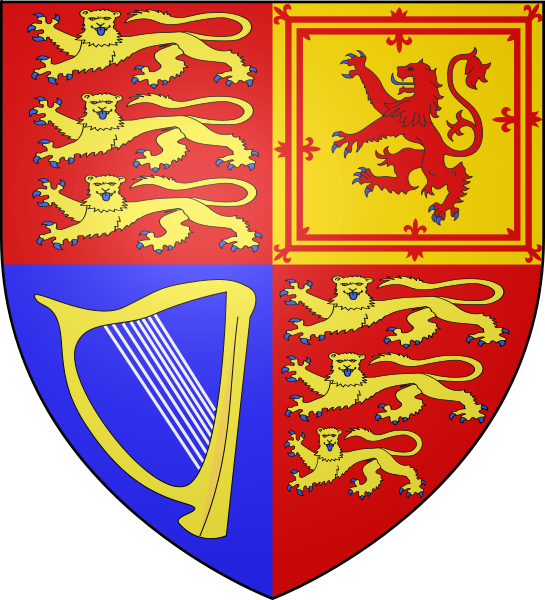
by Moe | Mar 3, 2020 | Latest Media, Meaning of Symbols
The symbol called the Double Headed or Double Axe is one of the oldest, most used, and least understood symbols that can be found all throughout history and especially in regards to true history, mythology, and Masonry. Perhaps nowhere in the world has more of these symbols been found with supporting archeology, artifacts, and stories than that of Mount Ida and Knossos on the island of Crete in Greece.

One of the oldest, Holiest, and most ancient Masonic places in all of the Western world. (more…)
by Moe | May 2, 2018 | Gnosis, Mystical Christianity
In my previous articles, The Meaning of Idea and Gnosis in the Bible, I explain that the Greek words found in the New Testament that are often translated in English as “to know, to see – to observe or to come to know through observation – to perceive and understand,” are “eido, eida, eidos, oida, ida, ginosko, epiginosko, epistamai, gnosis and epignosis.”
Words and deviations of these words that can be found hundreds of times in the Scripture.
This is also where we get the Platonic Eidos or Idea in English which is the main premise behind Plato’s “The theory of Forms or theory of Ideas.
This is the Matrix or material reality that we live in today. A world created by man through knowledge which then leads to ‘Forms’ or ‘Ideas’.
What I find fascinating is that we can find Platonic Eidos or Ideas all throughout the Scripture as well. For example, we find the verbs oida or eido and the nouns eidomen or oidamen hundreds of times on the Bible.
These same Greek words later become in English, “idae and idea.”
Examples of these words in Scripture are often connected to the prophets and Master Jesus.
Other words that connect to the English idea and derive from the old Greek oida, eido, eidomen, and oidamen are Idaean, Judiean, Judean, Juda, and Judah.
It appears that in the Scripture, eido or oida is used not in the sense of just knowing, but “knowing perfectly or right knowledge.”
What we can call “true spiritual knowledge or Gnosis.”
This was the message of Jesus in the New Testament showing that the path wasn’t just mere knowledge, AKA Gnosis of the Father, but knowledge and love is the path that leads to the Father.”
Like when Jesus rebuked the Pharisees in John 8:55 by differentiating his knowledge (Gnosis) of the Father with theirs by claiming that his is on the order of oida. In John 5:37, Jesus shows that his knowledge of the Father is different than the Pharisees when he says, “you have never heard his voice or seen his form [eidos].”
In other words, they don’t really have “true spiritual knowledge or Gnosis” of the Father because they lacked love. Jesus had true Gnosis and this is why he is called the “εἴδομέν – eidomen” in the Scripture.
As in Luke 9:49 when John says they say the eidomen casting out devils. Luke 9 : 49, “And John answered and said, Master, we saw [εἴδομέν – eidomen] one casting out devils in thy name; and we forbad him, because he followeth not with us. ”
According to the Book of Genesis, Judah was the fourth son of Jacob and Leah, the founder of the Israelite Tribe of Judah and founder of the Kingdom of Judah, the land of Judea. This is where we get the term Jew and as most people know, Jesus was a Jew from the Tribe of Judah or should we just say the “Tribe of Idea?”
As I mentioned in a previous article, the Greek historian, Diodorus Siculus had said Crete was once also known by the name “Idea.” The true home of Jesus, the Cross and many Saints and prophets.
It is well known by Christians that Jesus was not only a wandering teacher, he was a master and their Messiah who imparted knowledge (Gnosis) of how to live life to his followers. The facts are that in order to acquire knowledge (Gnosis) and teach it, you must first “formulate ideas” that then become a “vision” which leads to a “plan, design, proposal, or proposition.”
This definition of ideas being the basis of a teacher’s main job describes exactly what Jesus does for his followers so it makes sense that he is from the “Tribe of Idea AKA Judah.”
In the scholastic sense, the ideas of the teacher Jesus became a curriculum for humanity and in the Biblical sense, a theology of religion.
In the philosophy of Platonic thought, the life of Jesus is really an idea which is an eternally existing pattern of which individual things in any class (Religion) are “imperfect copies” – (Christians by Baptism rather than Baptism by True Gnosis).
Most Christians follow Jesus’ ideas of how to live life, but many “sin”, a word that means “miss the mark”. They get the “idea” but do not have the Gnosis for true salvation from their fallen states.
Therefore, they are “imperfect copies” of Jesus or “Platonic Eidos or Idea of Jesus.”
by Moe | Oct 20, 2014 | History of the Brotherhood, Irish History
“They went into the eternal kingdom into eternal life of brightest splendour; Baedan the noble the angelical Columba the resplendent.”
resplendent.”
The research I will put forth below is based on the Tribe of Judah, known as the Bedas (Baedans) in Ireland who ruled for approximately 10 centuries. The priesthood of the Bedas in Ireland were known biblically as the High Priests of the Tribe of Levi; who some later became Kings, Celtic Druids, Culdees, Fathers, Doctors and Saints of the Catholic Church.
My last name is Bedard, and the Bedas are my ancestors. This article is part of their fascinating story in Ireland.
As I have explained in some of my previous articles before, in the Tribe of Judah was an important sect of people known as the Bedas that have been scattered all around the world. I have written how part of the Tribe of Judah ended up in England as the Jutes, and in a land now known as the Kingdom of Kent in my article “The Masonic Archons of the Tribe of Judah.” I also had written about the many different Beda tribes in articles such as the Lost Tribe of Judah Found: The Bedas, and the Lost Tribe of Judah Found: The Scattered Children of Bab-El, where I connect several different Beda tribes together; who sometimes live thousands of miles apart, but they all seem to have almost the exact same names, customs and beliefs. (more…)
by Moe | Oct 14, 2014 | History of the Brotherhood
In a previous article, The Tattooed American Hebrew Indians with Elongated Skulls in Texas, I wrote about the Bedai  Indians and how they may be connected to the ancient Hebrews/Phoenicians. For the purpose of this article, I would like to put forth the beginning of my research into the various tribes around the world, who I have found have the same exact name or a very similar one to the Bedai tribal name, along with them also sharing many physical traits, languages (words), and customs. A scattered tribe, whom I believe may in fact be the remnants of the lost Tribe of Judah.
Indians and how they may be connected to the ancient Hebrews/Phoenicians. For the purpose of this article, I would like to put forth the beginning of my research into the various tribes around the world, who I have found have the same exact name or a very similar one to the Bedai tribal name, along with them also sharing many physical traits, languages (words), and customs. A scattered tribe, whom I believe may in fact be the remnants of the lost Tribe of Judah.
These tribes seem to spawn from a time of conquest in ancient Egypt and Greece right around the 4th-1st centuries B.C. under the Greco-Egyptian Ptolemaic Pharaohs. The main tribal connections almost all of them share are found in their names, physical traits, customs, manners, and the fact that many of these tribes wherever they had gone, had carved their communities into mountains and cliffs where they lived in man-made caves and catacombs, which are found all over the world.
In my future articles on this subject, I will detail the names, locations and cities carved into the sides of mountains around the globe where they had lived. You can also check out my past articles on the Tribe of Judah that will help you get up to speed on this Apocalyptic research. (more…)
by Moe | Sep 26, 2014 | Freemasonry, History of the Brotherhood, Irish History
In my last article on the Centaurs (Ken-taurs or Khan-taurs) titled “The Centaurs: Half Men and Half Horse Sons of God“, I  briefly explained this tribe of people who originally inhabited the island of Crete, Greece and Egypt; who then made their way into Britain. The first century Roman-Jewish historian Josephus calls them the Jud or the Judeans (Idumean) of Mount Ida, who I believe are connected today to the biblical Tribes of Judah and Benjamin. In the bible these people are also known as the Nephilim, Anakim race, the Sons of God, and connected to both the Tribes of Judah and Benjamin.
briefly explained this tribe of people who originally inhabited the island of Crete, Greece and Egypt; who then made their way into Britain. The first century Roman-Jewish historian Josephus calls them the Jud or the Judeans (Idumean) of Mount Ida, who I believe are connected today to the biblical Tribes of Judah and Benjamin. In the bible these people are also known as the Nephilim, Anakim race, the Sons of God, and connected to both the Tribes of Judah and Benjamin.
Today their Masonic descendants we may find represented in the Old Kingdom of Jute, which was originally Juteland or the land of the Jutes, and is now known as the Kingdom of Kent. Jutland, is regarded as Judah’s land. An adjective for Jute is “Jutish,” pronounced jootish. (more…)





